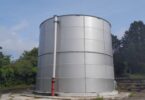From the UK to South Africa, scientists in more than 60 nations are now monitoring the spread of COVID-19 in sewage.
Unlike individual tests, sewage surveillance – known officially as wastewater-based epidemiology (WBE) – can estimate the case rate, numbers, and distribution for an entire community. This is because every time you use the toilet, you are actually flushing information on the diseases in your body down the drain and into the wastewater network.
Individuals infected with COVID-19 typically begin excreting the virus several days before becoming symptomatic and hence several days before they are likely to seek COVID-19 testing. This ability to track cases before they show up through regular testing procedures has helped authorities stay one step ahead of future outbreaks.
For instance, in Maine, USA, hospitals are on alert for a potential surge of patients, tipped off by consistently rising levels of the coronavirus in wastewater. During the winter 2021/2022 surge caused by omicron, California, Colorado, New York and Texas first detected the variant via sewage.
Wastewater surveillance has many advantages. It is anonymous and it is efficient – instead of an individual test, a single wastewater sample tests a population that could represent millions of people.
It is also cost-effective. The average price of a PCR test at a U.S. hospital is $148. Multiply this by the hundreds or thousands of tests that must be conducted every week to obtain reliable community-wide data on COVID-19, and the tab quickly grows. In contrast, a typical lab only spends about $300 to analyse a wastewater sample.
Even though wastewater testing has been practiced for decades its widespread use has exploded since the start of the pandemic. Rather than just ‘waste’, sewage has become a source of critical insights.
In Israel, wastewater intelligence platform Kando has developed a smart way to automate the process of sewage surveillance.
Kando deploys a network of sensors, autosamplers, and controllers under manholes in cities, and uses advanced algorithms and artificial intelligence (AI) to analyse the data. This information is then transferred to a cloud analytics dashboard that gives users a bird’s-eye view of their wastewater system.

Kando technician uploading the results from autosampler (Credit: Kando)
Founded in 2011 by Ari Goldfarb, the company originally designed the system to help municipalities detect industrial waste in sewer systems, and prevent pollution.
“Wastewater is a valuable, but largely ignored, source of information,” said Goldfarb, in an interview with H2O Global News.
“Just like we can access weather data at the touch of a button, we want to use smart technology to unlock valuable insights from wastewater – from alerting utilities to emerging pollutants to helping authorities monitor the health of the population,” he added.
Kando’s technology previously proved successful in helping authorities contain a 2013 polio outbreak in the southern Israeli town of Hura.
Once the pandemic hit in 2020, the company was perfectly positioned to roll out sewage surveillance across the country.
It set up a wastewater monitoring project with researchers from Ben-Gurion University of the Negev and the Technion – Israel Institute of Technology, as well as Sheba Medical Center’s virology lab.
The project now includes over a hundred cities and towns of more than 20,000 people nationwide, allowing health authorities to monitor cases and detect possible upcoming waves of infections by geographical location.
“Wastewater surveillance is like a blood test for an entire community – it gives you an overview of community health,” said Goldfarb.
The use of wastewater as a litmus test of public health could help us detect and manage the next pandemic.
Wastewater is a valuable, but largely ignored, source of information
Unsurprisingly, wastewater monitoring can also be used to assess the levels of other viruses that are circulating.
But the potential extends beyond viruses. According to researchers, the urine component of sewage may contain even more valuable information about our health.
The analysis of illicit drug residues in wastewater has proven to be a dynamic and robust drug monitoring tool, with the ability to provide timely information on drug use patterns. It is even possible to assess the prevalence of non-communicable diseases (NCD) such as diabetes or mental health conditions through the detection of certain pharmaceuticals or levels of the body’s primary stress hormone cortisol.
But there are limitations. While wastewater surveillance may have enormous potential as a public health tool, some aspects of the science need further development, according to a report by the Government Accountability Office in the US.
The report also highlighted the need for creating uniform methods for sample collections, analysis and data sharing.
There are ethical considerations too. Whether it be COVID-19 or any other disease, near source surveillance mustn’t breach privacy, said a recent study by the Scotland’s Centre of Expertise for Waters. “Sampling wastewater from small communities is possible but ethical procedures need to be put in place and it is essential that data is anonymised,” the report emphasised.
While clearer guidelines on the accessibility, governance and use of wastewater data is needed, researchers at Bangor University and the UK Centre for Ecology & Hydrology say that analysing wastewater will continue to reap rich rewards and deepen our insight into public health.
According to Kando, smart technologies are key to unlocking the true value of sewage surveillance.
The company’s automated sampling units take regular samples throughout the day, while simultaneously recording wastewater flow data- essential for calculating Normalised Viral Loads (NVL) and outbreak intensity.
This timing is vital for maximising the effectiveness of wastewater epidemiology. Pollution and increased flow can distort load measurements, so Kando’s solution only takes samples when conditions are right.
Taking samples at the correct moment is key to getting a result that accurately reflects a population’s infection profile.
Once a sample has been drawn, authorities are alerted through Kando’s dashboard that it is ready for collection.
By streamlining the process of sewage surveillance from collection to decision-making, Kando could be setting a standard for the rest of the industry.
As long as the data is shared and used responsibly, tech-driven wastewater surveillance has the potential to be a litmus test for public health – helping us manage the ongoing pandemic, predict future events and offer a bird’s-eye view of community wellbeing.
Read more Kando Articles and News on H2O Global News. Do you have an article or video that you would like to share? Submit your article here or keep up with the latest news from the water industry and wastewater industry by subscribing to our weekly newsletter







